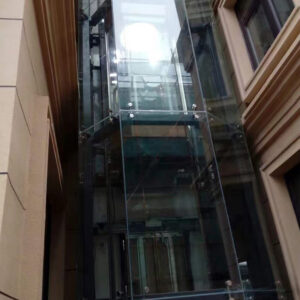Spare parts of elevators play a pivotal role in ensuring the smooth operation and safety of these vertical transportation systems. The longevity and reliability of these spare parts are crucial factors that influence the overall performance of elevators. Understanding the various factors that determine the lifespan of spare parts is essential for maintenance teams and manufacturers alike. In this article, we delve into the key aspects affecting the durability and longevity of spare parts in elevators.
Elevators are intricate systems comprising numerous components working in harmony to transport people and goods between different floors of buildings. Spare parts of elevators encompass a wide array of components, ranging from motors and cables to pulleys and control systems. The lifespan of these spare parts directly impacts the reliability and efficiency of elevator systems, making it imperative to identify the factors influencing their longevity.
Table of Contents
ToggleFactors Influencing Lifespan:
Quality of Materials: The quality of materials used in manufacturing spare parts of elevators significantly affects their lifespan. High-grade materials, such as durable metals and robust polymers, are essential for ensuring longevity and resistance to wear and tear.
Manufacturing Standards: Adherence to stringent manufacturing standards is crucial for producing spare parts that meet industry requirements for reliability and safety. Parts manufactured according to established standards are more likely to withstand prolonged use and environmental stressors.
Frequency of Maintenance: Regular maintenance and inspection schedules are essential for detecting and addressing potential issues with spare parts of elevators before they escalate into major problems. Adequate lubrication, cleaning, and adjustments can prolong the lifespan of components.
Operating Conditions: The operating environment of elevators, including factors such as temperature, humidity, and vibration, can impact the lifespan of spare parts. Exposure to harsh conditions may accelerate wear and corrosion, necessitating more frequent replacements.
Usage Intensity: The frequency and intensity of elevator usage directly influence the wear and tear experienced by spare parts. Elevators in high-traffic buildings or those subjected to heavy loads may require more frequent replacements of components such as bearings and cables.
Design and Engineering: The design and engineering of spare parts play a critical role in their longevity. Well-designed components that distribute stress evenly and minimize friction are less prone to premature failure, contributing to extended lifespans.
Compatibility and Integration: Compatibility with existing elevator systems and seamless integration of spare parts are essential for ensuring optimal performance and longevity. Mismatched or incompatible components may lead to premature wear and malfunction.
Supplier Reputation: The reputation and track record of the supplier or manufacturer of spare parts are indicative of the quality and reliability of their products. Choosing reputable suppliers known for producing high-quality components can enhance the lifespan of elevator spare parts.
In conclusion, the lifespan of spare parts in elevators is influenced by a multitude of factors ranging from material quality and manufacturing standards to maintenance practices and operating conditions. By addressing these factors comprehensively, maintenance teams and manufacturers can optimize the durability and reliability of elevator systems. Regular inspection, timely replacements, and adherence to industry standards are essential for maximizing the lifespan of spare parts and ensuring the safe and efficient operation of elevators.


